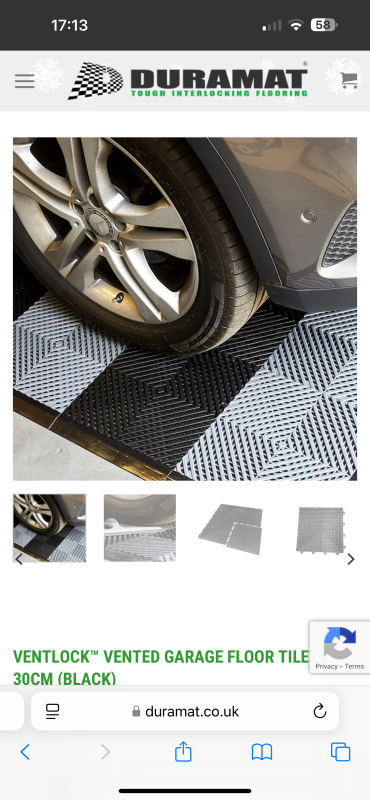c4sman
Member
- Messages
- 1,479
Hi all,
I’ve lived in our house with a double garage for about 9 years. The garage is single skinned, has a concrete floor is heated with a small rad and I’ve had a dehumidifier in it for most of the time I’ve owned it. Soon after moving I installed an interlocking vinyl floor which had held up well but I’ve always suspected was getting damp underneath. Today after noticing some moisture and white staining around the tile joints I finally got around to lifting a centre section of tiles and found them all to be wet on the underside (see pics). The garage has generally never been overly damp and maintains a sub 60% humidity level most of the year (with the help of the dehumidifier and radiator).
Does anyone have experience with this sort of problem? Do you think the concrete floor is the problem or are the floor tiles just stopping it “breathing”, causing condensation to form underneath. Could vented floor tiles solve the problem or do I need seal the floor with some form of epoxy first?
Just throwing the questions out there but not sure they are the right ones, just hoping there are some experts or experiences out there to point me in the right direction!


I’ve lived in our house with a double garage for about 9 years. The garage is single skinned, has a concrete floor is heated with a small rad and I’ve had a dehumidifier in it for most of the time I’ve owned it. Soon after moving I installed an interlocking vinyl floor which had held up well but I’ve always suspected was getting damp underneath. Today after noticing some moisture and white staining around the tile joints I finally got around to lifting a centre section of tiles and found them all to be wet on the underside (see pics). The garage has generally never been overly damp and maintains a sub 60% humidity level most of the year (with the help of the dehumidifier and radiator).
Does anyone have experience with this sort of problem? Do you think the concrete floor is the problem or are the floor tiles just stopping it “breathing”, causing condensation to form underneath. Could vented floor tiles solve the problem or do I need seal the floor with some form of epoxy first?
Just throwing the questions out there but not sure they are the right ones, just hoping there are some experts or experiences out there to point me in the right direction!





